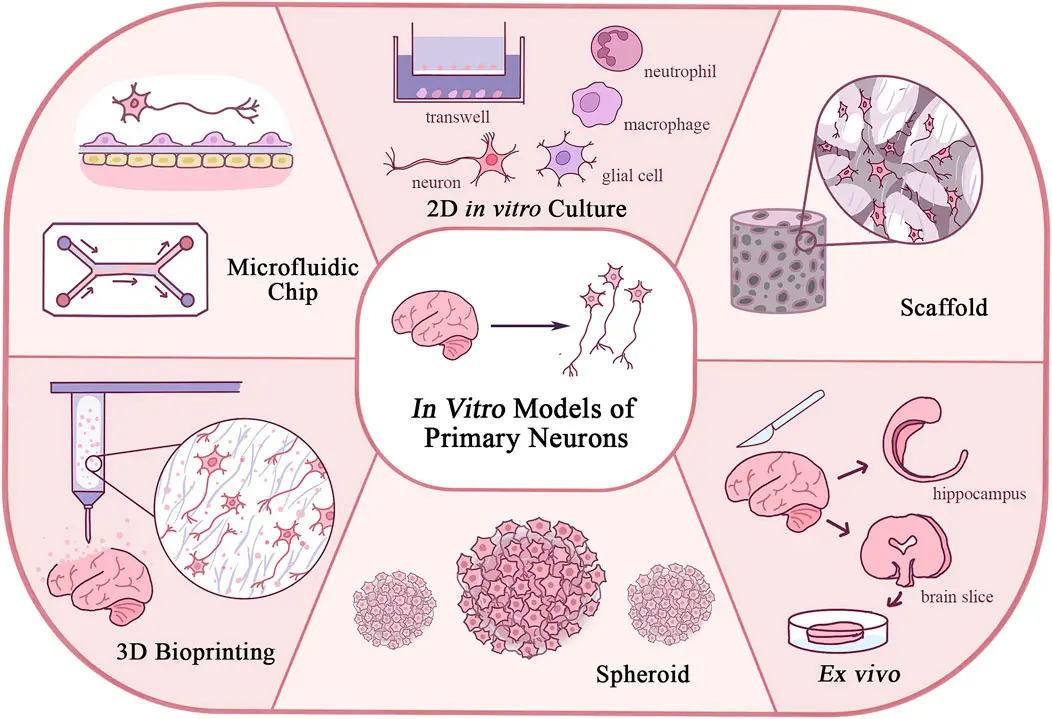Neurotensin is a 13–amino acid neuropeptide that plays a significant role in brain signaling, inflammation, and vascular biology. Found in both the central nervous system and the gastrointestinal tract, neurotensin has become a focal point in neuroscience and biotechnology due to its diverse physiological and pathophysiological roles.
With ongoing breakthroughs in diagnostics and translational research, neurotensin is emerging as a powerful biomarker and a tool for understanding diseases like stroke, neuroinflammation, and cognitive dysfunction.
Biological Role of Neurotensin
Neurotensin participates in several important brain and body functions. Its effects are mediated through neurotensin receptors (NTS1, NTS2, and NTS3), which are distributed across neurons, glial cells, and vascular endothelium.

Key Functions Include:
- Modulation of dopaminergic transmission
- Regulation of blood-brain barrier (BBB) permeability
- Anti-nociceptive effects
- Promotion of hormone and immune mediator release
- Influence on thermoregulation and cardiovascular tone
Because of these varied functions, neurotensin is being actively studied in:
- Neurodegenerative disorders (Alzheimer’s, Parkinson’s)
- Psychiatric conditions (schizophrenia, stress disorders)
- Central nervous system (CNS) inflammation
- Cognitive performance and memory modulation
Neurotensin in Biotechnology:
Neurotensin has become a biotechnological gateway into the complex relationships between neurovascular integrity, immune signaling, and cellular communication in the brain.
Researchers leverage neurotensin as a biomarker to:
- Detect and monitor brain injury or neuroinflammation
- Assess neurovascular barrier function
- Measure therapeutic or regenerative response
- Explore cellular stress and disease progression
Product Highlight: Neurotensin ELISA Kit
Accurate quantification of neurotensin levels is made possible through high-performance ELISA kits. One of the most trusted solutions on the market is the Maxanim Neurotensin ELISA Kit, available via Neurovax.
Key Features:
- High sensitivity and specificity
- Cross-species compatibility (human, rat, mouse)
- Suitable for plasma, serum, CSF, and tissue extracts
- Publication-ready protocols
- Rapid processing with reproducible results
Ideal for labs focused on neuroscience, neuropharmacology, cerebrovascular biology, and neuroinflammation.
Practical Applications of the Neurotensin ELISA Kit
This ELISA kit plays a central role in modern biotech labs, supporting a wide range of research areas:
1. Stroke and Blood-Brain Barrier Studies
- Tracks neurotensin levels following ischemia
- Used to evaluate BBB disruption and inflammatory leakage
- Supports mechanistic studies of vascular protection and healing
2. Neuroinflammation Research
- Measures neurotensin during inflammatory states (TBI, MS)
- Helps evaluate glial activation and cytokine signaling pathways
3. Neurodegeneration Models
- Assesses neurotensin as a marker for brain tissue stress
- Correlates with behavioral and cognitive outcomes in Alzheimer’s and Parkinson’s studies
4. Stem Cell & Regenerative Therapies
- Supports tracking of neurotensin levels in 3D-bioprinted vascular scaffolds and stem cell-seeded implants
- Helps determine efficacy of CNS repair strategies
5. In Vitro Neuroscience
- Detects neurotensin release from neuronal and glial cultures
- Monitors response to environmental or mechanical stress
Biotechnological Innovations in Brain Research
Nanotechnology
Lipid Nanoparticles (LNPs):
- Engineered to cross the blood-brain barrier and deliver biologically active compounds
- Neurotensin-functionalized LNPs can home in on receptor-rich brain regions
Antimicrobial Nanocoatings:
- Applied to stents and neural catheters to prevent infections and minimize clotting
- Neurotensin signaling can be monitored to detect early immune responses
Smart Devices and Healing Materials
Self-Healing Polymers:
- Used in vascular grafts and devices that can automatically repair microcracks
- Enable longer-lasting brain implants or scaffolds with neurotensin biomarker tracking
3D-Bioprinted Vascular Scaffolds:
- Printed using patient-derived cells and neurotensin to stimulate angiogenesis
- Aid recovery in stroke and traumatic brain injury
Stem Cell-Seeding Platforms:
- Specialized devices embed stem cells with neurotensin-rich environments to promote neuronal growth
- Monitored using ELISA kits to gauge regenerative progress
The Future of Neurotensin in Brain Science
Neurotensin is no longer just a signaling molecule it is a scientific lens into the brain’s most complex systems. Its relevance spans:
- Vascular integrity
- Neuroinflammation
- Cognitive behavior
- Regenerative healing
With trusted biotechnology tools like the Neurotensin ELISA Kit, researchers can measure and interpret neurotensin levels with precision uncovering new pathways for diagnosis, monitoring, and neural recovery.
Available Now on maxanim

